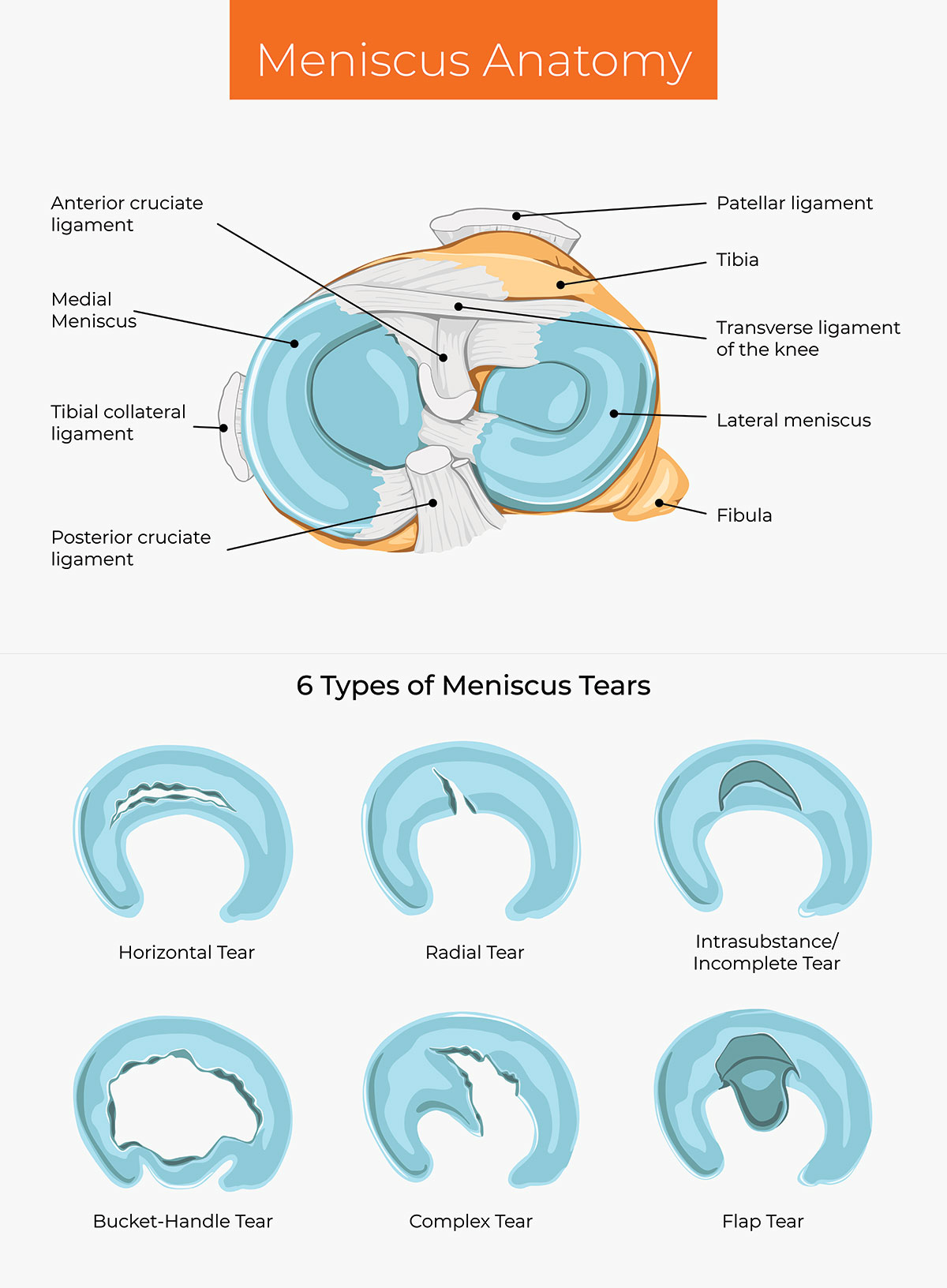Key Pointers:
- Understand the role of the meniscus and how it can tear
- Learn about the different types of meniscus surgery
- Know what to expect before, during, and after the procedure
- Find out how rehabilitation supports long-term recovery
What Is the Meniscus and Why Does It Matter?
The meniscus is a crescent-shaped piece of cartilage in each knee that acts as a cushion between your thigh bone (femur) and shin bone (tibia). It helps distribute weight, absorb shock, and stabilise the joint during movement.
When the meniscus tears, often due to twisting or pivoting motions during sports, or gradual wear with age, it can cause pain, swelling, and a catching or locking sensation in the knee. Some minor tears may heal on their own, but larger or more complex tears may need surgical treatment.
When Is Meniscus Surgery Recommended?
Surgery may be considered when:
- The tear is large, complex, or in a poorly healing area of the meniscus
- You experience persistent knee pain or swelling despite rest and physiotherapy
- Your knee locks, catches, or gives way
- You want to return to sports or high-activity work that requires knee stability
Your orthopaedic doctor will review your MRI and clinical findings to decide whether surgical repair or trimming is appropriate.
Types of Meniscus Surgery
Meniscus surgery is typically performed through arthroscopic (keyhole) techniques, which involve small incisions and a camera to guide instruments inside the knee. Depending on the nature of the tear, your surgeon may recommend:
- Meniscus Repair – The torn cartilage is stitched back together to allow natural healing. This option preserves more of your meniscus and is preferred when possible.
- Partial Meniscectomy – The damaged portion of the meniscus is trimmed away to relieve pain and prevent further tearing.
- Total Meniscectomy (rare) – Removal of the entire meniscus is uncommon and only done when repair or partial trimming isn’t feasible.
Your doctor will discuss which method best suits your tear pattern and activity level.
What Happens During the Procedure?
Meniscus surgery is usually done under regional or general anaesthesia. The surgeon makes two or three small incisions around the knee to insert a camera and fine instruments. The tear is either repaired or trimmed, and the incisions are closed with small sutures or adhesive strips.
The procedure usually takes less than an hour, and many patients can go home the same day.
What to Expect After Meniscus Surgery
Recovery depends on the type of procedure performed:
- After a repair, weight-bearing may be limited for several weeks to protect the stitches.
- After a meniscectomy, you can often walk with support within a few days.
- Physiotherapy begins early to restore motion, strengthen muscles, and improve balance.
Most patients return to normal daily activities within 6–8 weeks, with sports resumption typically between 3–6 months, depending on healing progress.
Rehabilitation and Long-Term Knee Health
Post-surgery rehabilitation plays a key role in recovery. Strengthening exercises and flexibility training help restore knee stability and reduce the risk of future injury. Maintaining a healthy weight and avoiding high-impact activities during healing can also protect the repaired tissue.
When to See an Orthopaedic Doctor
If knee pain persists after an injury, or if your knee locks, clicks, or feels unstable, early evaluation by an orthopaedic specialist is important. Timely diagnosis and treatment can prevent further damage to the cartilage and joint surface.
Frequently Asked Questions (FAQ)
1. What’s the difference between meniscus surgery and meniscus repair?
“Meniscus surgery” is a general term. A repair means stitching the cartilage to allow healing, while a meniscectomy means trimming away the torn section.
2. Is meniscus surgery painful?
You may feel some soreness after surgery, but pain is usually manageable with medication and ice therapy. Discomfort gradually improves with rest and physiotherapy.
3. How long does recovery take after meniscus surgery?
Most patients resume daily activities within 1–2 months. Sports or high-impact activities may take longer, especially after a meniscus repair.
4. Can a torn meniscus heal without surgery?
Small tears in the outer portion of the meniscus, where blood flow is better, may heal with rest and physiotherapy. Larger or degenerative tears often require surgery.
5. What happens if I delay treatment for a meniscus tear?
Untreated tears can worsen over time, leading to chronic knee pain and early arthritis due to uneven pressure on the joint.
Book a Consultation at Liberty Orthopaedic Clinic
If you’re experiencing knee pain, swelling, or locking after an injury, it’s best to have it evaluated early. Book an appointment with Dr Lee Eu Jin, Consultant Orthopaedic Surgeon at Liberty Orthopaedic Clinic, to discuss whether meniscus surgery is right for you.
Our clinic provides comprehensive care for knee conditions, from accurate diagnosis to surgical and rehabilitation management.





